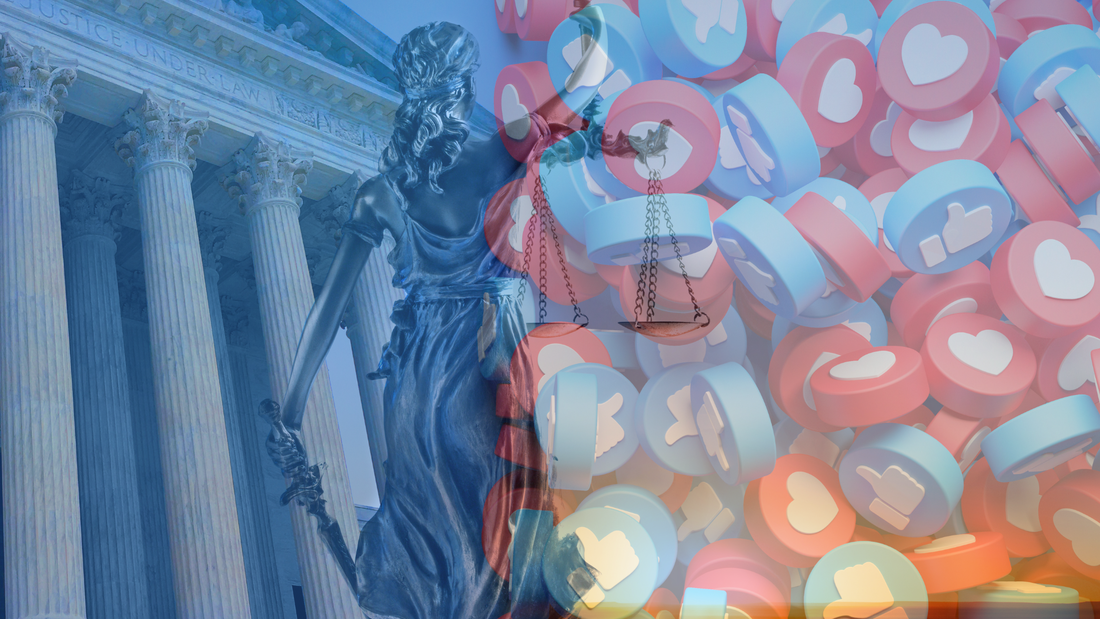UPDATE: Supreme Court to Hear Arguments on Government Influence Over Social Media Platforms10/24/2023
In July we analyzed an order issued by Judge Terry A. Doughty of the U.S. District Court for the Western District of Louisiana that enjoined the Biden Administration and a wide range of federal agencies from “urging, encouraging, pressuring, or inducing in any manner the removal, deletion, suppression, or reduction of content containing protected free speech posted on social-media platforms.”
Last month, PT1st covered a subsequent ruling from the Fifth Circuit Court of Appeals, which significantly narrowed the scope of the district court’s injunction, reducing the district court’s ten prohibitions on government communications with social media platforms to one, and greatly limiting the agencies subject to the injunction to the White House, the FBI, the surgeon general’s office and the CDC. Now, acting on a request for review by the government, the U.S. Supreme Court has agreed to hear the case, staying the lower courts’ injunction in the meantime. At least until the High Court rules on the case, Biden Administration officials are not barred from interacting with social media platforms to combat what they view as misinformation. Justice Alito, joined by Justices Gorsuch and Thomas, dissented from granting the stay, writing: “At this time in the history of our country, what the court has done, I fear, will be seen by some as giving the government a green light to use heavy-handed tactics to skew the presentation of views on the medium that increasingly dominates the dissemination of news. That is most unfortunate.” Protect The 1st is not so sure. Given that the Court is now set to hear this case, executive branch officials will have good reason to be especially circumspect in the interim. Whatever happens, this case will be of great importance for the First Amendment’s application to online speech and permissible levels of government involvement in urging platforms to moderate content. And it is only one of several big cases set for consideration before our highest court in the coming months. The Supreme Court also recently agreed to hear a dispute stemming from Florida’s and Texas’ efforts to prohibit social media companies from engaging in some forms of content moderation, which the platforms have always viewed as protected by the First Amendment. In another case set in a hearing later this month, the Court will tackle the question of whether public officials can block their critics on social media. Regarding the present controversy, the Fifth Circuit ruled in September that the White House, the Surgeon General’s office, the FBI, and the CDC either coerced or significantly encouraged social media platforms to moderate protected speech primarily regarding election misinformation and misinformation about the pandemic. In the stay application, Solicitor General Elizabeth B. Prelogar argued that the platforms are private entities that made independent content moderation decisions. The government’s interactions with them, in turn, constituted routine advice consistent with its duties to protect public health and safety. “A central dimension of presidential power,” wrote Prelogar, “is the use of the office’s bully pulpit to seek to persuade Americans – and American companies – to act in ways that the president believes would advance the public interest.” The attorneys general of Missouri and Louisiana, both plaintiffs in the case, responded that the bully pulpit “is not a pulpit to bully,” arguing that the administration went too far in its communications by engaging in threatening and coercive behavior. As such, they assert, the decisions to remove or downgrade certain posts and accounts constituted government action. “The government’s incessant demands to platforms,” they wrote, “were conducted against the backdrop of a steady drumbeat of threats of adverse legal consequences from the White House, senior federal officials, members of Congress and key congressional staffers — made over a period of at least five years.” If, in the end, the Supreme Court determines that the government is threatening social media platforms, that will be a consequential finding. As the dissenting Justices write, “Government censorship of private speech is antithetical to our democratic form of government ...” At the same time, the government must be able to speak to private actors, including social media platforms, on issues of public concern. Ultimately, we need a roadmap for distinguishing between legitimate government action and coercion. A robust discussion at the national level is best suited to parse the nuances at play when it comes to social media and free speech. Congress should hold bipartisan hearings to determine the circumstances where government advice may be helpful to platforms’ content moderation decisions versus the circumstances where such advice may be coercive. We’ll be watching this case closely as it progresses. Comments are closed.
|
Archives
June 2024
Categories
All
|
ABOUT |
ISSUES |
TAKE ACTION |



 RSS Feed
RSS Feed